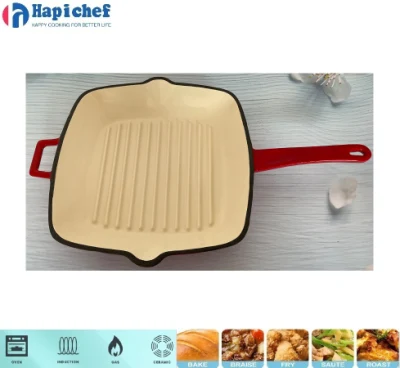Effective Methods for Reseasoning Your Cast Iron Cookware for Optimal Performance and Longevity
Reseasoning a Cast Iron Pan A Guide for Home Cooks
Cast iron pans are a beloved staple in kitchens worldwide, celebrated for their durability, excellent heat retention, and ability to improve with age. However, to maintain their non-stick properties and prevent rusting, periodic reseasoning is essential. In this article, we'll delve into the process of reseasoning a cast iron pan, outlining the steps and providing tips to ensure your cookware continues to perform at its best.
Why Reseasoning is Important
Seasoning refers to the process of applying a layer of oil and heating it to create a protective coating on cast iron cookware. This layer not only enhances the pan’s non-stick capabilities but also protects it from moisture and oxidation, which can lead to rust. Over time, with frequent use and cleaning, the seasoning can wear off, necessitating reseasoning to restore its performance.
Supplies Needed for Reseasoning
Before diving into the process, it’s important to gather the right supplies. Here's what you’ll need
1. Cast Iron Pan Ensure your pan is clean and free of any food residue. 2. Abrasive Cleaner If the pan has any rust or old seasoning, a plastic scrub pad or fine steel wool can help remove it. 3. Cooking Oil Choose a high-smoke point oil such as flaxseed oil, grapeseed oil, or vegetable oil. The choice of oil can affect the final finish of the pan. 4. Paper Towels or a Clean Cloth For applying oil and wiping away excess. 5. Oven You’ll need a conventional oven for the seasoning process.
Steps for Reseasoning Your Cast Iron Pan
1. Clean Your Pan Start by thoroughly cleaning your cast iron pan. If there is rust or old seasoning, scrub the pan using an abrasive cleaner. Rinse and dry it thoroughly to prevent any moisture from causing future rust.
reseasoning a cast iron pan suppliers

2. Apply Oil Once the pan is clean, apply a thin layer of oil all over the pan, including the handle and the bottom. Use a paper towel or cloth to spread the oil evenly. Be careful not to leave any excess oil, as this can lead to a sticky finish.
3. Preheat the Oven Preheat your oven to around 450°F (232°C). This high temperature will help polymerize the oil, forming a strong, durable non-stick surface.
4. Bake the Pan Place the oiled pan upside down in the preheated oven. To catch any drips, place a sheet of aluminum foil or a baking sheet on the rack below. Bake the pan for about an hour. This step allows the oil to bond with the cast iron, creating the desired seasoned surface.
5. Cool the Pan After an hour, turn off the oven and let the pan cool inside. This gradual cooling process helps the seasoning to set properly and prevents cracking.
6. Repeat if Necessary For best results, especially if the pan is particularly worn, you may want to repeat the oiling and baking process two to three times to build up a solid layer of seasoning.
Tips for Maintaining Your Seasoned Cast Iron Pan
- Avoid Soaking Always clean your cast iron with hot water and a scrub brush, avoiding prolonged soaking to reduce the risk of rust. - Dry Thoroughly After washing, dry your pan completely on the stove over low heat to remove all moisture. - Regular Oiling After each use, consider applying a thin layer of oil to further protect and maintain the seasoning.
In conclusion, reseasoning your cast iron pan not only restores its functionality but also prolongs its lifespan. With the right technique and regular maintenance, your cast iron skillet will not only remain in pristine condition but will also enhance your cooking experience for years to come. Happy cooking!
-
Why Every Kitchen Needs a Casserole Cast Iron DishNewsJun.24,2025
-
Experience the Tradition and Quality of Cast Iron CookwareNewsJun.24,2025
-
Double Sided Cast Iron Grill PanNewsJun.24,2025
-
Cast Iron Dutch Ovens You’ll Actually UseNewsJun.24,2025
-
Buy Cast Iron Griddle for Everyday CookingNewsJun.24,2025
-
Barbecue Iron Grill Cooking PowerNewsJun.24,2025
-
Standard Product Lines from Cast Iron Cookware SuppliersNewsJun.11,2025
